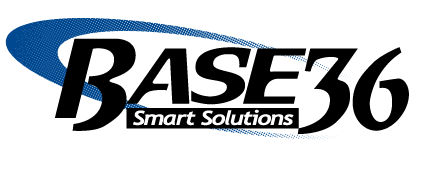So you’ve got a QA Interview coming up, huh?  Congratulations! Since you’re reading this post, I’m going to bet that you’re doing all the pre-interview prep: researching the company, getting your outfit dry-cleaned, and coming up with interview question answers. Great. We’ve got 10 popular QA interview questions and answers below to help you prepare.
Congratulations! Since you’re reading this post, I’m going to bet that you’re doing all the pre-interview prep: researching the company, getting your outfit dry-cleaned, and coming up with interview question answers. Great. We’ve got 10 popular QA interview questions and answers below to help you prepare.
There’s no way to know if these questions will be asked of course, but we’ve found that many QA Managers use at least one of these as their opening questions gaybygay.com, testing your know-how before they launch into the more difficult ones.
1. Compare a test plan to a test case. What does each include?
The test plan is a document that describes a project’s testing plans. It includes everything from the testing scope, to approach and resources, as well as the schedule.
The test case gets more specific than a test plan. It describes, step-by-step, how to test the application. This document includes test steps, prerequisites, outputs, and test environment.
2. What is a software development life cycle?
The software development life cycle, also known as the SDLC, describes the process through which software is developed. There are slight differences in what different organizations call these specific steps, but they all start with development and end with application maintenance. The most popularly accepted steps are: requirement phase, the design phase, the coding phase, the testing phase, release, and maintenance.
3. What is positive testing? Negative testing? Compare the two.
When you test an application with the correct data, ensuring that everything works as it should with expected user behavior, you are performing a positive test. For example, if a password only allows numbers, you would only put numbers into this field with a positive test. If everything works as it should, your program has passed this particular positive test.
When you test an application with incorrect data, ensuring that errors don’t occur with unexpected user behavior, you are performing a negative test. Using the previous example, you would put both numbers and letters into the password field with a negative test. If an error message occurs, you know that your program has passed this particular negative test; it didn’t let you into the system when there was unexpected behavior.
Negative testing ensures that everything works when there is unexpected user behavior, while positive testing ensures that everything works when the end user does what the program expects. In other words, negative testing makes sure that things that shouldn’t work, don’t, while positive testing makes sure that things that should work, do.
4. What is a primary key? What is a unique key? How are they different?
A primary key is a column in a database where each row has a unique value. Each table has only one primary key. No NULL values are allowed. A unique key is a column or group of columns that together hold unique values. A table can have more than one unique key. For example, in a list of American Citizens, the column with social security numbers would be a primary key whereas the first and last name columns combined with phone number would be a unique key.
5. What is the difference between requirements and specifications?
Requirements are the features, functions, and goals of the proposed software system as defined by the client. For example, a company may want their software to “Store shopping cart data for at least 30 days.” This would be a requirement.
Specifications, on the other hand, explain how these features, functions, and goals are to be met. For example, a specification would be “A user’s session information will be persisted into the operational datastore upon logout or session timeout and maintained for 30 days.”
6. When do we perform functional testing?
Functional testing tests the code from end-to-end, making sure that all parts of the application are working –- even the parts that occur during failures. Functional testing should start early. Planning can be initiated during the analysis phase, and functional testing should start well before development is complete. It is common to start running functional tests within the QA department once a Minimum Viable Product is released.
7. What is the sequence to write a test case?
A test case should have these four things:
1. Test case name
2. Description of the test case
3. Steps, description of the actions that need to be performed
4. Expected Results, describe expected outcomes so as to compare results
8. What is application programming interface?
An application programming interface, also known as an API, is a programming language that allows different applications to communicate with one another. Companies often release APIs so that other organizations can build products that are based off of this original software. An example of an API would be Java’s JDBC (Java DataBase Connectivity)
9. What if there isn’t enough time for thorough testing? What would you do?
In order to understand where to focus testing efforts during a time crunch, the project team must perform risk analysis and speak with stakeholders. Primary considerations include, but are not limited to, understanding important functionality, especially those apparent to the end user, and making sure that the software is capable of meeting it’s initial specifications.
10. What is the difference between performance testing and load testing?
When you want to see what happens to your system with a certain user load, you are load testing. With this form of testing, you have a better understanding of what is happening from the users’ perspective, whereas performance testing allows you to see what is happening from an architecture perspective. Performance testing is concerned with an application’s efficiency not user load.
Good luck with your QA interview! If you’re looking for other QA opportunities, don’t forget to check out our open roles!
Are there other popular QA questions you’d add to the list? Let us know in the comments section below, or join the conversation on LinkedIn, Facebook, Twitter, or Google+.
Thanks to zeevveez for the use of their photograph.


